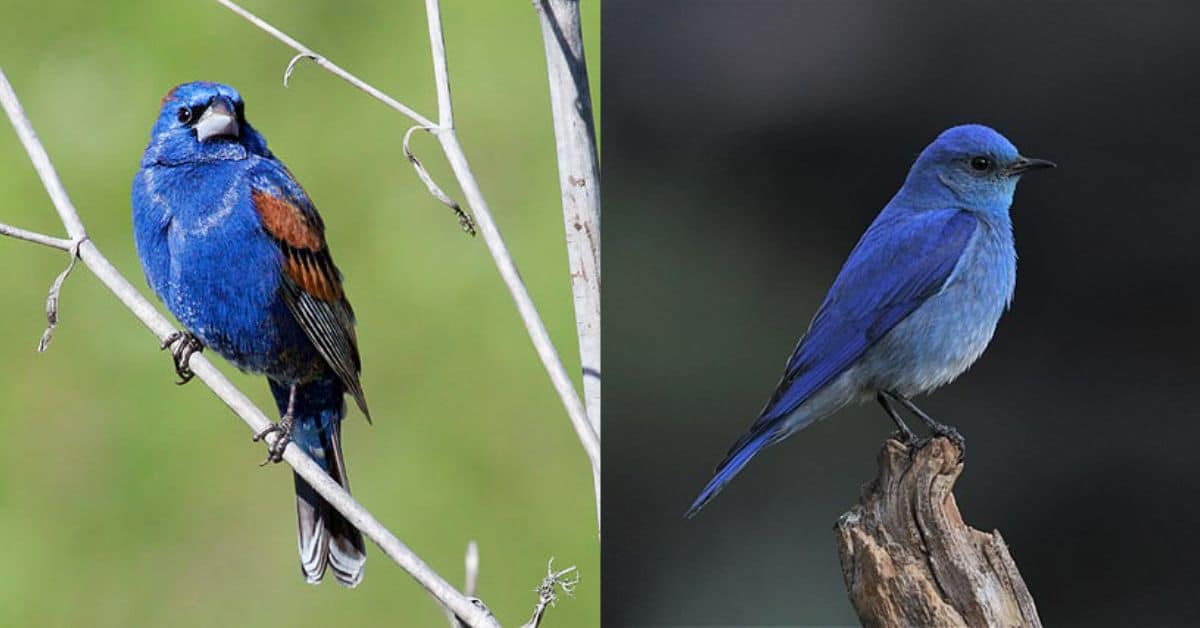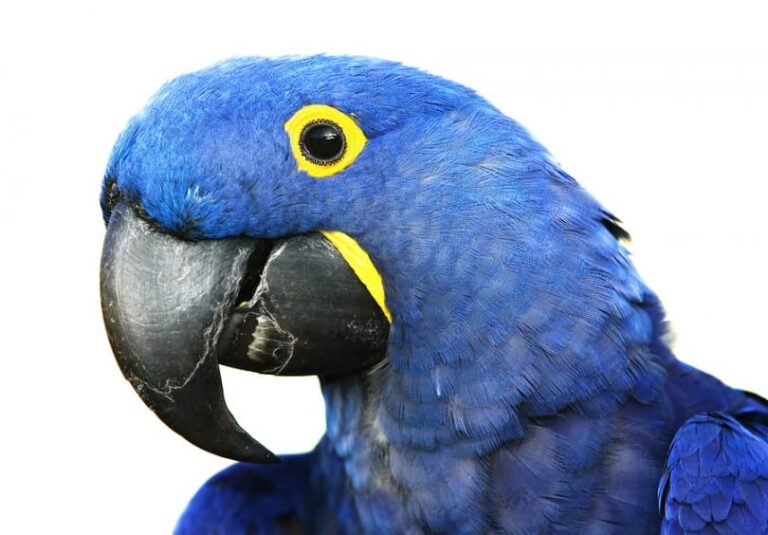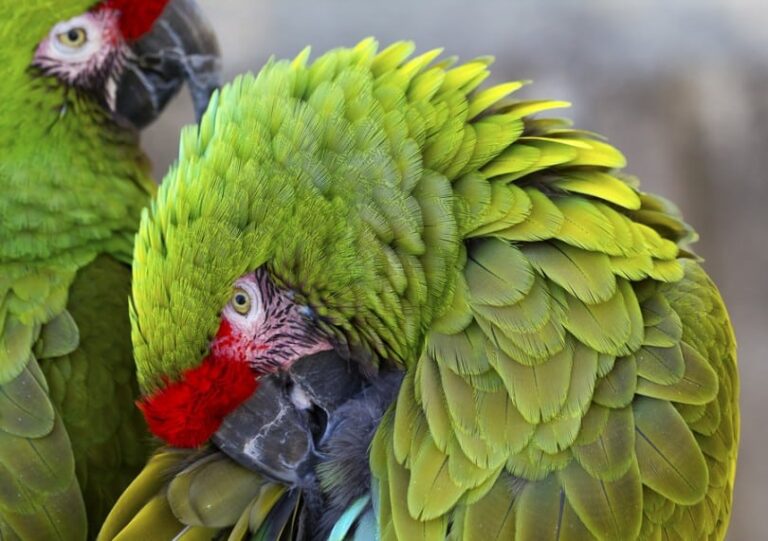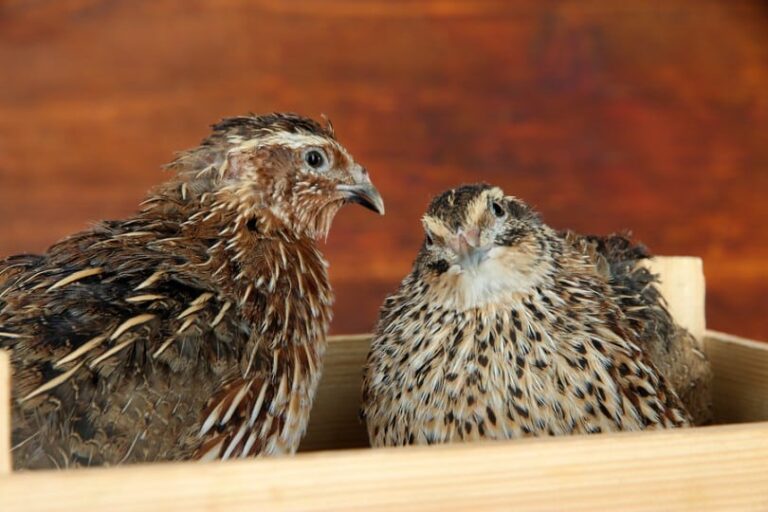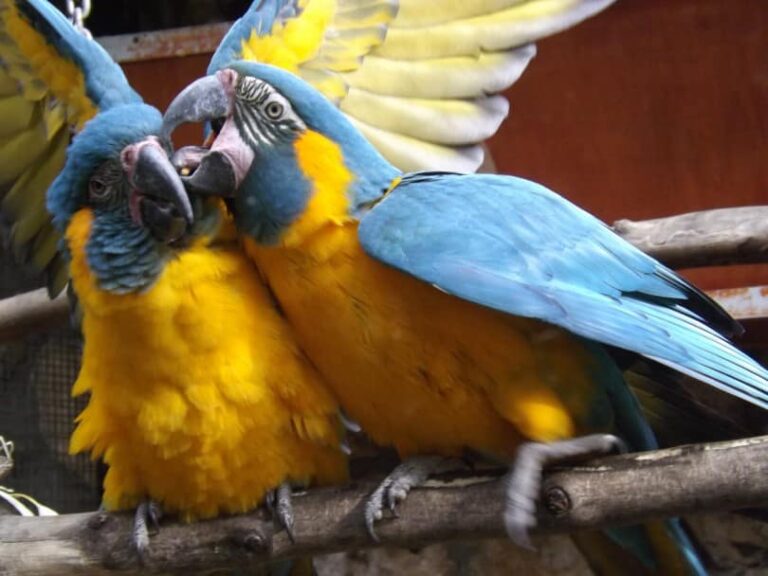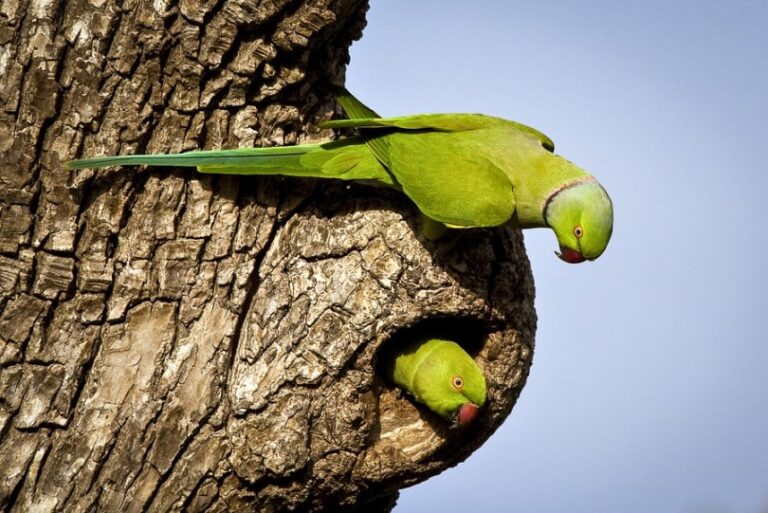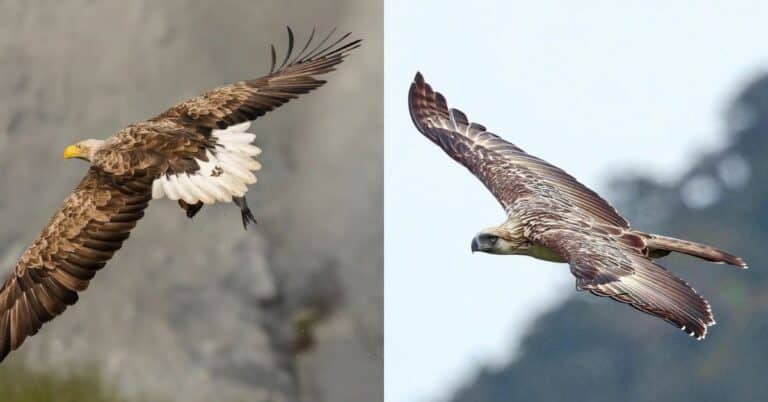Blue Birds: 7 Of The Most Iconic & Reason Behind Their Coloration
Thinking of blue birds, “the blue bird of happiness,” is an expression that often comes to mind for many of us. If not, you should know that the blue bird is considered a symbol of happiness in many cultures. This might be explained by the fact that blue is the color of the two major elements of the universe – water and the sky.
Considering such symbolic significance, harmony, happiness, love, and hope are some of the concepts often associated with blue birds. However, it’s not more interesting to understand what makes blue birds blue and what the most iconic blue birds are on our planet. In this article, we’ll try to cover both of these questions and provide a list of 7 types of blue birds in nature.
Where to See Blue Birds
Blue birds prefer meadows and park-type areas where short grass and fewer trees provide a wide field of view and, therefore, easier feeding opportunities. That’s why these songbirds often find a convenient place to live in food-rich farmlands and vineyards. Speaking of human-cultivated lands, blue birds provide two-fold benefits and help people in the natural prevention of harmful insects.
Usually, blue birds feed on insects such as butterflies, spiders, flies, dragonflies, worms, and beetles. However, their diet changes according to the season. For instance, with the arrival of autumn, when the supply of insects decreases, they begin to eat berries with pleasure.
Interestingly, people who wish to help blue birds through the cold seasons plant berry trees and shrubs in their yards. Another common method to attract blue birds is to place feeders in your yard and feed them regular bird food. As a result, they can fill their living spaces with special beauty and sweet chirping.
What Makes Blue Birds Blue?
Thanks to scientific research, we already know how bird feathers get their yellow or red coloration, and we know that this is due to a pigment called carotenoid. As for other colors, for instance, flamingos get their pink pigment from the algae and crustaceans which is a regular part of their diet.
According to scientists, no bird organism can produce blue pigment. Therefore, people naturally wonder — how do birds get the blue color? Well, the blue color we see is produced by the interaction of light waves with the feathers and their constituent keratin. More precisely, different keratin structures reflect light in different ways to produce various shades of blue. It may seem like a magic trick, but blue feathers indeed appear gray under UV light.
To better understand this fact, we will draw a simple parallel – the feathers of birds have a blue color for the same reason why we perceive the sky as blue – sunlight is made up of different colors, such as red, orange, yellow, green, blue, and violet. When sunlight enters Earth’s atmosphere, tiny particles in the air scatter these colors. Blue light scatters more than other colors, so we see the sky as blue.
7 Most Iconic Blue Birds
1. Eastern & Western Blue Birds
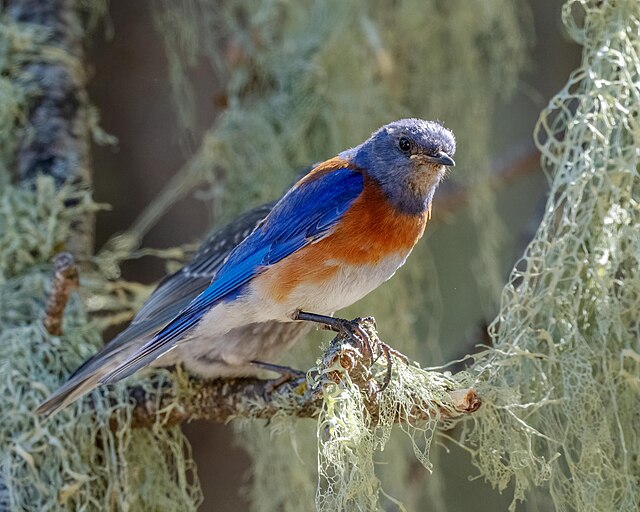
Eastern and Western blue birds are easily differentiated from other types with their small, rounded bodies, short beaks, and tails. Their head, back, and tail are blue, the chest and sides of the abdomen are yellowish, and the areas around the legs are white or gray. Unlike male bluebirds, females don’t have striking coloration.
People who go for a walk in the spring often see the Eastern Blue Bird at the edges of the forest, in open and grassy areas. These birds prefer to appear in those areas because of their favorite good — small insects and invertebrates such as beetles, grasshoppers, worms, and snails.
But the best thing about these birds isn’t their beauty. In fact, blue birds take part in reducing the population of harmful insects. That’s why their appearance makes most farmers satisfied — Eastern bluebirds are the little guardians of our crops.
2. Black-Throated Blue Warbler
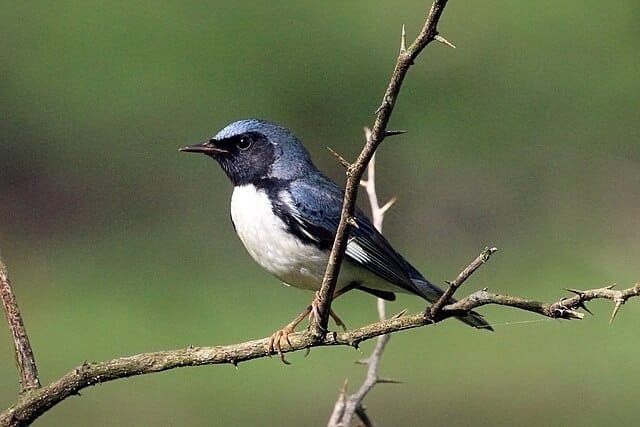
Male representatives of black-throated blue warblers feature a dark blue back, a black face, and a white belly. Unlike them, females are characterized by a completely different color — their bodies are olive and gray.
During the breeding season, these Black-Throated Blue Warbler lives in mixed forests. Once migration season arrives, they switch places and move to woods, yards, and even public parks. Changing places is the only way for them to find food, as they typically feed on insects, spiders, fruits, nectar, and seeds.
Black-throated blue warblers spend the winter in the tropical forests of the Caribbean and migrate to the eastern United States in the spring. Nature admirers usually notice them around the Great Lakes in the Northeast.
3. Mountain Bluebird
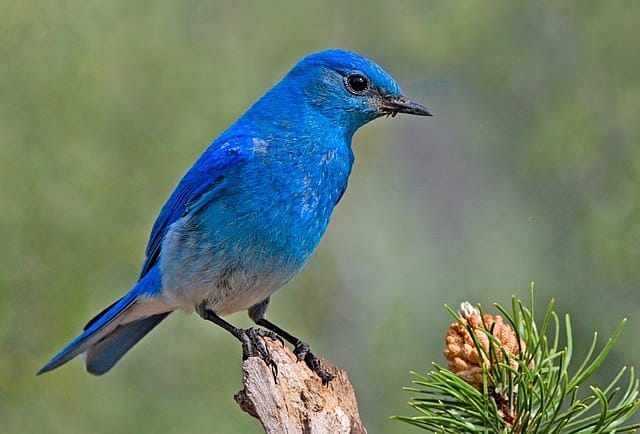
Mountain Bluebird unquestionably deserves to be on our list for its stunning blue coloration. Males of these songbirds feature white bellies and wings. On the contrary, the female Mountain Bluebird is mostly gray-brown, although you can also see blue on the wings and tail.
These blue birds enjoy eating berries, insects, and worms. As for habitat, Mountain Bluebirds breed in rocky and mountainous areas, yet they prefer to spend the winter where it is warmer. Consequently, you can find them in eastern California, western Texas, Arizona, and New Mexico.
4. Blue Grosbeak
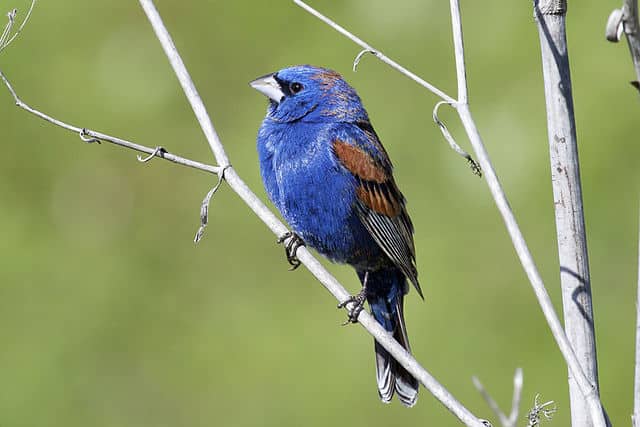
The appearance of this particular species includes a combination of blue, yellow, black, and gray colors. Therefore, this bird often becomes an inspiration for artists and painters. Blue Grosbeak’s beak is another impressive feature — unlike most other birds, their upper part is dark and the lower part is significantly lighter in color.
The most common areas where these birds reside are the southern and central United States and sometimes people witness them in northern Mexico.
5. Indigo Bunting
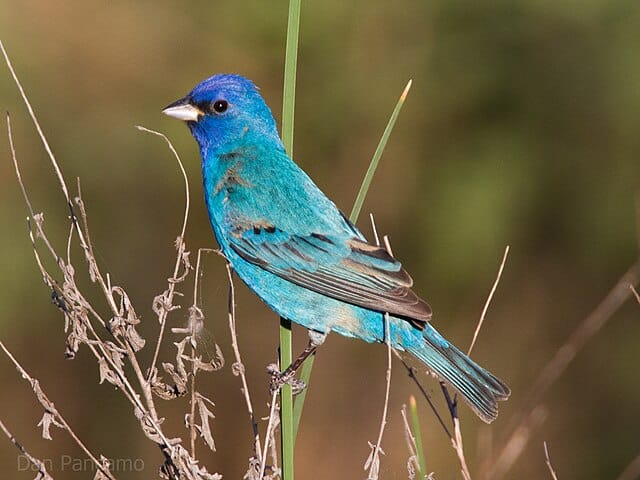
If you wish to know the most energetic blue bird that is proud of its social personality, then let us introduce you to Indigo Buntings. These blue birds are sure to catch your attention while walking through the forests and fields. During the summer months, fortunately, you won’t have to go far and will have a chance to bump into these songbirds along roadsides all around the eastern United States.
A single look at the Indigo Bunting is enough to notice that, similarly to other blue birds, only the male Indigo Buntings feature blue feathers. On the contrary, females are characterized by a modest brown coloration and are quite rare to notice. But still, do you know what makes female Indigo Buntings stand out the most?
They are hard-working and spend most of their lives building their nests and raising their chicks. Which, you will probably agree, is quite a responsible attitude towards raising the next generation.
6. Blue Jay
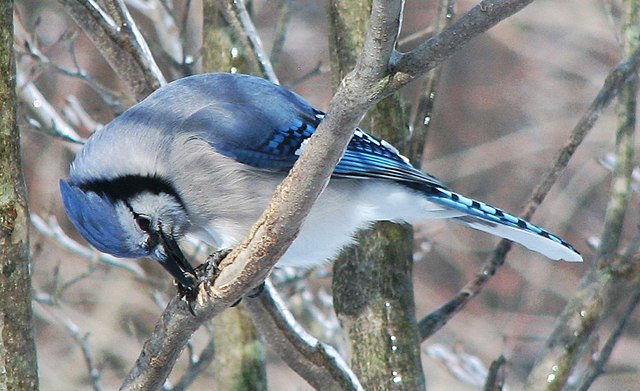
Thanks to its blue, white, black, and gray feathers, the Blue Jay looks like a bird of paradise at first glance. If you carefully catch a glimpse of it when it takes off, you will be convinced that a bird of such beauty is rarely found on Earth.
As a matter of fact, along with beauty, Blue Jay is smart and handy. They store food in the ground and return to it only when they run out of nourishment. Speaking about food,Blue Jay’s diet is nothing unusual. Like most birds, it consists of insects, nuts, fruits, and various seeds and grains.
These blue birds reside in the forests, parks, and backyards of the eastern United States and Canada. When you go looking for them, you will immediately feel their proximity if you hear an electronic, metallic sound. Blue Jay’s call aims to warn other birds that a predator is nearby. That’s how they save their species and protect the nest.
7. Steller’s Jay
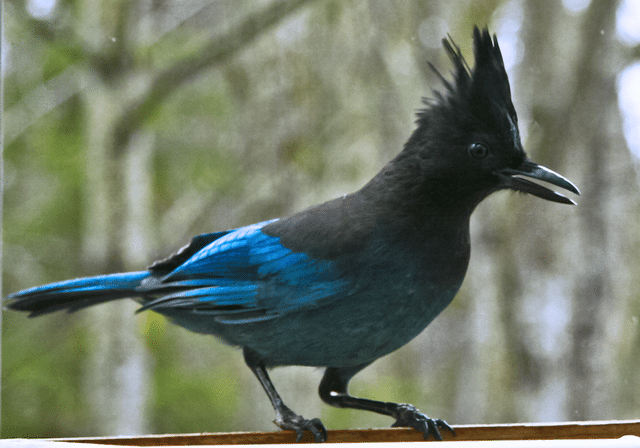
It would be unimaginable to complete our list of blue birds without the Steller’s Jay. The combination of blue, gray, and white colors characteristic of these birds will not leave anyone indifferent. However, their main virtue is still a vertically standing hairstyle.
To make it easier for you to identify the Steller’s Jay in the wild, it has white markings near the eyes, and the wings have a dome-shaped decoration of various shades of blue. Unlike other bluebirds, male and female Steller’s Jays are equally proud of their striking blue coloration.
Steller’s Jays don’t migrate and stay in the Rocky Mountains during cold winters. Fortunately, some Steller’s Jays inhabit forests, picnic areas, parks, and backyards, and in those areas, clearly, it’s easier for average citizens to witness them. Their habitat is mainly the Southwest of the United States of America and the section from the Pacific Northwest to Alaska. The diet of these blue birds includes insects, fruits, seeds, nuts, small mammals, reptiles, and eggs.
Final Thoughts
We hope that by the end of the article, all your questions have been answered and you now have comprehensive information about blue birds. This fact gives us reasonable grounds to assume that blue birds have won your heart and you too think that they deserve the status of one of the most beloved inhabitants of our planet!
With that in mind, if you, like many bird enthusiasts, are drawn to the color and sweet chirping of blue birds and want to witness their charms in person, you should unquestionably visit the parks and forests of the United States – the usual habitat of most types of blue birds.

Nato is a content writer and researcher with a background in psychology who’s eager to explore the wonders of nature. As a travel enthusiast and animal lover, she hopes to inspire others to discover and cherish the beauty and importance of the natural world.

